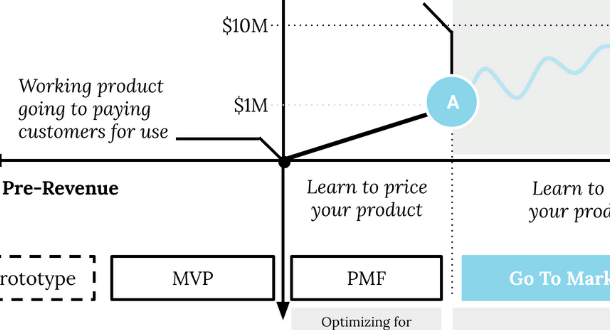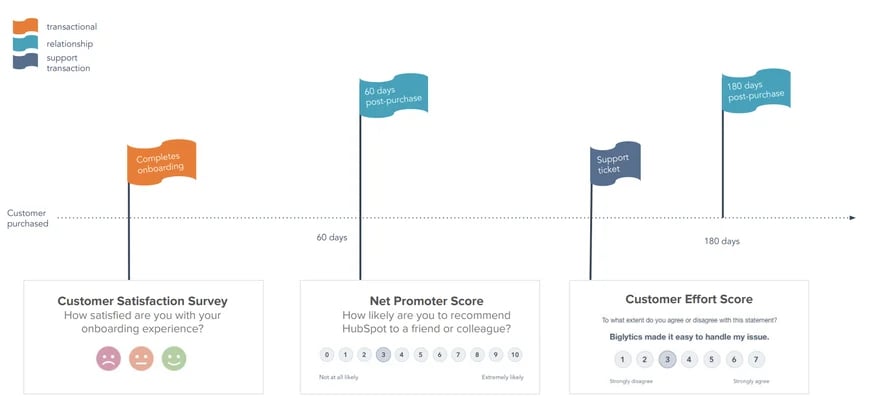End friction in your commercial process with HubSpot
People talk a lot and often about their bad experiences and enjoy listening to them even more. That's why negativity often dominates the news. It's not that people love bad news, but 90% of people indicate that they prefer to receive truthful and honest information, even if it is negative.
This way of thinking has created a culture where people want to have control over the conversations they have with companies. They want to lead the sales process themselves, rather than be led through it. 60% of customers even dislike friction so much that they stop doing business with a company after just one bad customer experience.
What is friction in the commercial process?
Friction in the commercial process can take many forms. It can be a small problem, a missed support ticket or long wait times for example. Or to something more serious such as shipping errors or escalated customer complaints. Friction can even stem from internal issues within the team, such as a lack of communication between the sales and marketing teams, or the fact that a CRM is not being used. Thus, you can miss out on important potential customers. Also, customers seeking information may become irritated.
By resolving this friction, you not only facilitate lead conversion, but also upsell and retain existing customers. The question is: How do you tackle this? How can you keep up with your customers? They are smarter and more cautious than ever before, and they expect every company to adopt the same strategies as the big names.
The solution lies in implementing a number of practical applications, combined with new technologies such as HubSpot's integrated CRM, CMS, marketing hub, sales hub and service hub. With these, you can consolidate your data, centralize communication within the team, automate your processes, simplify customer service and personalize customer communications.
How to solve friction with HubSpot
1. Merge software and platform channels.
The friction felt by your staff eventually reaches the customer. Therefore, you must first ensure that internal friction is resolved. Think about all the points at which exchange and management decisions take place: from communication within the team and access to software, to file sharing and business processes. Do the sales and marketing teams communicate with each other? Do their goals align? Are they sharing information?
The beauty of a system like HubSpot is that it allows you to have all your business data on a central platform. You still have control over access, but this way your employees don't have to open 10 different apps or screens before they can get started. With an integrated CRM, marketing and sales hub, you also make it easier for your teams to communicate with each other, share files within the same network and better understand each other's roles. That way, you improve communication between your marketing and sales teams and prevent the creation of silos, both between employees and between employees and the customers they interact with.
2. Take advantage of automation
Another point of friction is the red tape associated with manual processes and systems. This not only costs your company money, but also allows frustration to seep into customer communications. The result: disappointing sales and substandard support.
HubSpot's free customer relationship management (CRM) and content management (CMS) systems allow employees to capture lead and customer data into a central database, which can then be used to automate workflows, processes and communications. No more manually entering data or drafting the same emails to customers over and over again: with HubSpot's powerful AI, you eliminate repetitive or administrative actions that waste your employees' time and create frustrated customers.
3. Customer support system:
Does the point of friction you hear about most often happen to be time? That's something customers, at least, don't have - and certainly not when they're trying to solve a problem. They want answers now, and if they don't get them, they're not going to sit back and wait for you to come up with something. This is an excellent situation where an automated customer support system comes in handy.
What does a customer who needs help experience? What happens if an employee is not available? Being in charge of one's own time is what a customer wants. The customer doesn't care about your new fancy chatbot if that's not the way he or she wants to be helped. It's as simple as that. With self-service, you give customers the ability to set up their customer support themselves, and employees can spend their time on those customers who really need help.
In addition to self-service tools, tools like ticketing systems and help desks allow customers and employees to track their request in the system. Employees no longer overlook any action or customer request. Customers can check on the status of their query at any time. HubSpot's service hub also offers automation workflows that allow you to assign customer inquiries to the most appropriate employee using AI logic. This creates a system where no customer or prospect is overlooked.
4. Personalization
HubSpot's CRM by itself is great for centralizing data and communication within teams, but when you integrate it with marketing and sales, you have a powerful personalization tool on your hands. A company's sustainability depends on customer loyalty, and that loyalty is exactly what you achieve with personalization. Why? Because personalization of your marketing and sales channels shows that you care about your customers. You show that you are paying attention to the interaction between the customer and your company - that you are listening.
HubSpot lets you personalize your emails, ads, customer inquiries and all other communications, and that goes far beyond inserting the customer's name. You can segment your audience by industry, job title or area, communicate with your customers based on the pages they viewed on your website or the date they last called you, and even refer to their most recent customer inquiries in emails or on landing pages.
By personalizing (potential) customers' experiences, you not only show that you care about them, but also build a long-term relationship with them. As a result, customers will be happy to keep coming back and will forgive you a miss here and there.
But whether it's automation or personalization, you won't get rid of friction in your conversion and sales process overnight. That's an iterative process that requires you to regularly review your processes and systems, and that's exactly where HubSpot's software comes in so handy. One platform that acts as an end-to-end solution for everything you and your customers need. Resolve friction permanently and ensure satisfied customers.

Want to get the most out of HubSpot? Subscribe to our newsletter, follow us on LinkedIn, or attend our HubSpot User Days!
Explore HubSpot User DaysShare this
You May Also Like
These Related Stories

Why it's best to look to your customers (too) to drive growth.

Many B2B companies miss important opportunities

